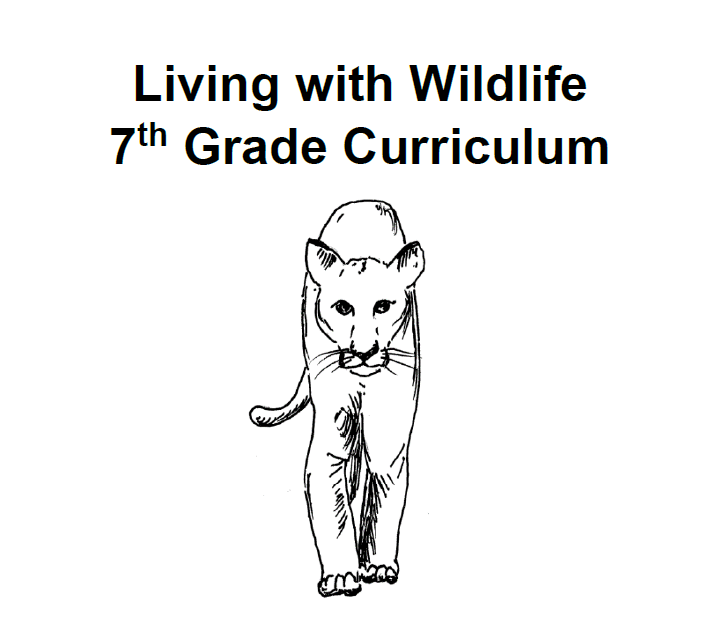Last updated: August 8, 2025
Lesson Plan
Crossing Paths: A Great Debate

Students will think about what it means for humans and wildlife to interact. Explore viewpoints from different stakeholders and see how land managers have to take that into account!
NPS Graphic
- Grade Level:
- Middle School: Sixth Grade through Eighth Grade
- Subject:
- Science,Social Studies
- Lesson Duration:
- 60 Minutes
- State Standards:
- LA.7.5.2.1
LA.7.1.7.3
SC.7.E.6.6
SS.7.C.2.13
SS.7.C.2.7
SS.7.E.2.1
Essential Question
How do people with different viewpoints come together to make community decisions about wildlife management?
Objective
In this activity, students will:
1. Read and interpret the viewpoint of a particular stakeholder in the building of a wildlife crossing.
2. Debate the issue from the perspective of a particular stakeholder at a simulated committee meeting.
Background
The extensive home range requirements of the Florida panther often mean that individuals cross busy highways in order to find food, shelter, water, or a mate. Panthers usually cross at times of limited visibility (between dusk and dawn), a dangerous and potentially deadly task. Even motorists who follow the speed limits may collide with a panther that jumps out at the last moment.
As a response to this and other road kill problems, the Florida Department of Transportation has built multiple wildlife crossings or underpasses in areas where panther crossings are most frequent. The wildlife crossings are extremely successful in preventing accidents and saving animal lives – not only panthers, but bears, deer, and other animals as well. However, these crossings are costly (anywhere from $2M to $8M) and involve the installation of miles of fencing on either side of the highway. In order to retrofit existing highways with wildlife crossings, the county must support the decision to use taxpayer money for the project.
In this activity, students will play the roles of different stakeholders at a community meeting. They will determine whether or not a new wildlife crossing should be constructed at a certain spot on a local highway where panther-vehicle collisions have occurred. As the teacher, you act only as a facilitator. Do not provide opinions or try to persuade the students to see things a certain way. If necessary, remind them of their stakeholder’s views and keep the discussion focused on the problem at hand. The aim of this exercise is for students to see how endangered species management is not easy.
Preparation
Prepare copies of the Stakeholder Position worksheet for each student. Print one copy of the Stakeholder Roles and cut them apart to be able to hand 1 role to each student. Determine who will be in each committee and write the committee number on the stakeholder role slip for each student.
Materials
Each student will need:
• Stakeholder Role slip of paper
• Stakeholder Position worksheet
Procedure
1. Ask students: How does society affect wildlife management? Discuss the idea that people with different beliefs and values can affect the management of wildlife, especially when dealing with controversial topics that may not have one correct answer. Explain that a stakeholder is any person who has an interest in a particular management decision.
2. Have students read the section titled The Problem individually or as a class. Discuss the problem as a class and make sure students understand the conservation history of the Florida panther and the function of the wildlife crossing.
3. Inform the students that they will now be given the opportunity to explore this issue firsthand. Each will be assigned the role of a stakeholder participating in a community meeting. As a group of stakeholders representing different viewpoints, they will need to come to a consensus regarding a specific issue.
4. Hand out Stakeholder Role sheets. Inform the students that even though they will be playing fictitious characters, the scene they will be enacting actually happened and will likely happen again.
5. Instruct students to read their roles carefully and answer the first 3 questions on the Stakeholder Worksheet to define their position. Have each student briefly introduce their position to familiarize the class with their viewpoint. Please remind the students that this is just one individual’s viewpoint and may not represent all of the people with similar values.
6. Place the students into committees of 5 or 6 students each. Make sure that each committee has at least 1 stakeholder that is pro, neutral and con. You may use the Committee Assignments sheet to form the groups.
7. Within their committees, have students discuss the pros and cons of the wildlife underpass, complete the remainder of the questions on the Stakeholder Worksheet. Then, the committee must come to a consensus on what to do about the wildlife underpass. They should write down their ideas and prepare to persuade the other committees in favor of their consensus.
8. It is now time to begin the town council meeting. To begin the meeting, test the student’s knowledge of the issue by asking them to explain why the problem exists. Then, each committee will select a speaker in their group to present the committee’s recommendation to the class.
9. After all committees have presented, hold a class vote on the situation. Discuss the outcome – were students surprised? Do they agree personally? How would the real-life situation be different?
Vocabulary
Stakeholders, wildlife crossings, taxpayers, endangered species
